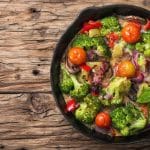
Calories Debunked
It’s well known that if you consume more calories than your body needs, you will gain weight. However, counting calories with precision isn’t straightforward: In fact, it’s time consuming and boring.
It’s important to have an understanding of how many calories you require, how many calories you consume on average, and which foods carry hidden calories. So how can you do this without counting?
Understanding your calorie intake requirement
If you are unaware of how many calories you need each day in order to maintain your current weight, there are plenty of online calorie calculators you can access which take into account your age, gender, physical activity, height and weight.
Losing and gaining weight
A safe weight decrease each week is 1-2lbs, this equates to approximately a 500-600 calorie deficit each day. The same rule applies for gaining weight.
Why not all calories are the same
When it comes to calories, be aware that they are not much of a muchness. Processed foods that contain large amounts of sugar will increase your blood sugar levels quickly, leaving you to crash soon afterwards – making you tired, hungry and looking for your next meal or snack.
However, foods such as vegetables, fruit and whole grains contain large amounts of fibre that will be digested more slowly, leaving you fuller for longer and less likely to want to eat soon afterwards, therefore consume less calories throughout the day.
Tricks of the trade
- You shouldn’t need to check food labels very often as these tend to belong to processed foods. However, on the occasion that you do, be sure to compare the calories per 100g of food rather than per portion/serving as this will vary from food item to food item.
- Avoid ‘diet’ or ‘light’ products as the calories within them are usually similar to full fat versions as much of the fat is commonly replaced with sugar.
Small changes to shed the calories
1. Nutrition labels
As we have mentioned, don’t be tricked by the incongruent calorie counting from product to product. But we encourage you to avoid nutrition labels altogether and stick to real, whole foods. Calories are far harder to rack up with them, and hence you can eat a lot more!
2. Ditch soft drinks
There are approximately 140 calories in a can of coca cola. Instead, choose to have a glass of sparkling water. You can add some zing to it through fresh mint and real fruit pieces.
3. Stock up on fibre
Pile your plate high with vegetables and swap any simple carbohydrates for complex ones. For example, switch white rice for brown, and white bread for whole meal.
4. Snack wisely
Swap chocolate bars, crisps and biscuits for carrot sticks, fruit and nuts.
Understanding where the hidden calories are versus which foods you can pile high onto your plate without any concern of calorie overload is the key to knowing the meal choices and portion sizes you can have to maintain your current weight. This will soon become second nature and will require little thought.
Click on any of the below boxes for more tips and tricks.
For full details of our Employee Nutrition Services, please find our brochure here and to chat through how this may be implemented in your workplace please call Anna on 07810 716758.


